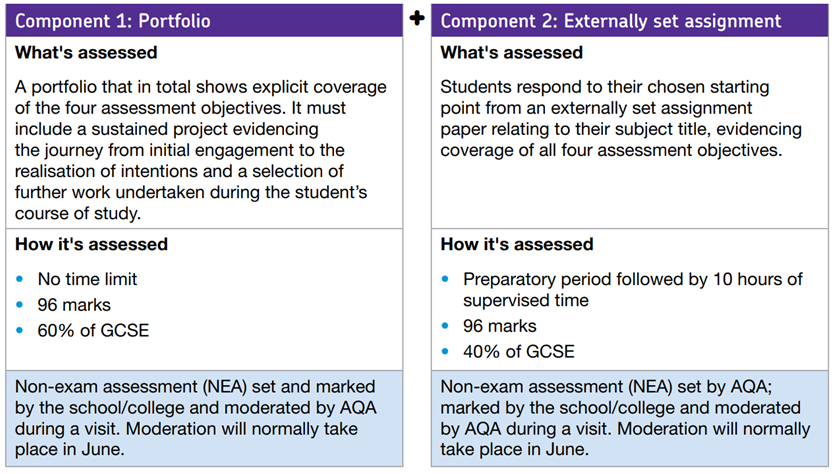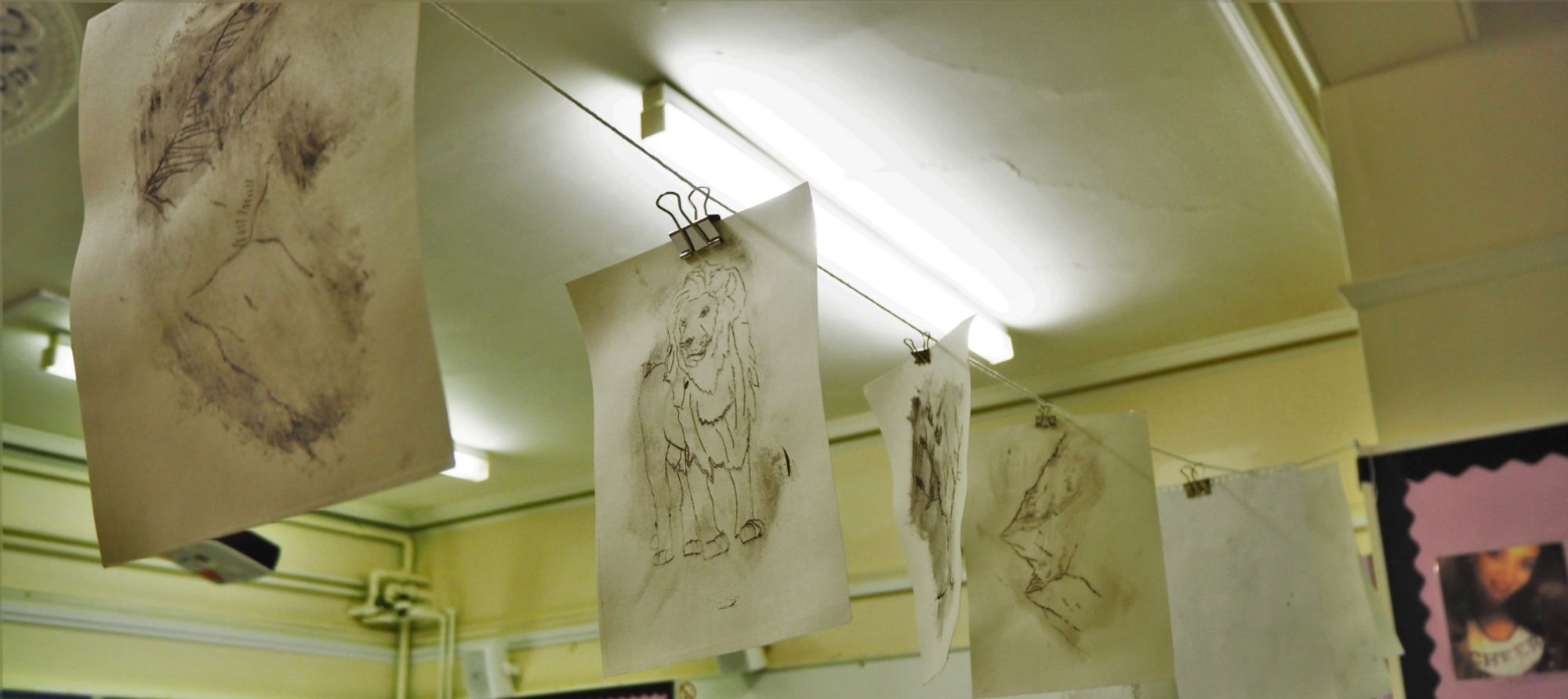Art
Art is a place for children to learn to trust their ideas, themselves and to explore what is possible.
- Maryann F. Cole
Art is everywhere – in our physical being and the world around us, in our imaginations, in our souls. Art can be found or created. Art encourages creativity and the ability to express your own thoughts and ideas. This in time helps to build confidence and the improvement of your health and wellbeing. Art acts as an outlet for releasing pressures of everyday life and also helps to develop critical thinking skills.
Believe, Achieve, Exceed:
In Art and Design we BELIEVE that in order for academic achievement it is important to take into consideration the students social, emotional and mental health. This also includes the development of the student both mentally and physically. Within the Art curriculum, we encourage students to express their selves through art, giving them the opportunity to experiment and make mistakes along the way. We promote British values and SMSC within the classroom through the research of different artists from different backgrounds and cultures.
Art and Design is within the vocational strand of the curriculum that is provided at MMAP. Students ACHIEVE success in their next steps through a mixture of both practical and classroom-based learning. This allows the students to become more independent with their learning and achieve their own goals. Which in time, builds their confidence within the subject. We encourage our students to EXCEED their own personal goals by stretching and challenging them. This includes inviting artists and workshops in to the school including Graffiti workshops, sculpture using chicken wire and painting pottery. Students have the opportunity to go on visits to museums and galleries to enhance their cultural capital and broaden their worldwide views. Art and design within school has given the students the opportunity to express their own ideas and be creative!
KS3:
Key stage 3 students stay with us for up to 12 weeks and in this time our students will explore different media and materials. This includes both wet materials, dry materials and workshops. Students in Key Stage 3 have the freedom of choosing their own theme giving them ownership for their work and allowing them to express themselves. The students will also learn the art of annotating and analysing their work and the work of others.
At the Maidstone and Malling Alternative Provision, we intend to deliver high quality Art GCSE lessons that will inspire pupils to think innovatively and to develop a creative practical understanding. The curriculum provides pupils with opportunities to develop their skills using a range of media and materials. During the lessons, pupils learn the skills of drawing, painting, printing, collage, sculpture and digital art. During the course, pupils are introduced to a range of works and will develop knowledge of the styles and vocabulary used by famous artists. They also have the opportunity to visit art galleries and museums, expanding their cultural capital. The skills acquired are applied to their cross-curricular topics. Many areas of art link with mathematical ideas of shape and space; e.g. when printing repeating patterns and thinking about 3D shapes to support structures. The pupils are expected to be reflective and evaluate their work, thinking about how they can make changes and keep improving. Pupils are encouraged to take risks, experiment and then reflect on why some ideas and techniques are successful/unsuccessful for their chosen theme.
KS3 Art
Week 1
- Drawing
Week 2
- Painting
Week 3
- Painting
Week 4
- Chalk and Pastel
Week 5
- Chalk and Pastel
Week 6
- Oil Pastel
Week 7
- Oil Pastel
Week 8
- Painting
Week 9
- Painting
Week 10
- Clay work
Week 11
- Digital work
Week 12
- Digital work
KS4:
We deliver AQA GCSE Art and Design – Fine Art to our KS3 cohort. We inspire pupils to think innovatively and to develop a creative practical understanding. Pupils are given opportunities to develop their skills using a range of media and materials. During the lessons, pupils learn the skills of drawing, painting, printing, collage, 3D work and some digital art. They explore and evaluate different creative ideas. During the course, pupils are introduced to a range of works and develop knowledge of the styles and vocabulary used by famous artists. They also have the opportunity to visit art galleries and museums, expanding their cultural capital. The skills they acquire are applied to their cross-curricular topics. Many areas of art link with mathematical ideas of shape and space; e.g. when printing repeating patterns and thinking about 3D shapes to support structures. The pupils are expected to be reflective and evaluate their work, thinking about how they can make changes and keep improving. Pupils are encouraged to take risks, experiment and then reflect on why some ideas and techniques are successful/unsuccessful for their chosen theme.
KS4 Art
|
Year 10 & 11 |
||
|
Term 1 & 4 |
Term 2 & 5 |
Term 3 & 6 |
|
Developing ideas based on a project theme. Find relevant artist to look at that will help to inspire mini pieces of work. |
Explore different media, materials, techniques and processes and evaluate the work that has been produced. Record ideas and observations relevant to intentions through imagery, drawings, paintings etc. |
Create own designs and experiments that link to the prep work. Create a final piece of work that realises intentions as work progresses. |
Assessment Information
Assessment Information:
The qualification features a wide range of titles including Art, Craft and Design, Fine Art, Graphic Communication, Textile Design, Three-dimensional Design and Photography. The specification has been designed to allow pupils to develop knowledge and understanding during the course through a variety of learning experiences and approaches, including engagement with sources. This will allow them to develop the skills to explore, create and communicate their own ideas. Pupils will demonstrate these skills through the development, refinement, recording, realisation and presentation of their ideas through a portfolio and by responding to an externally set assignment. The GCSE Art and Design course consists of 2 components. Component 1 is a portfolio of work and a selection of further work. This component is worth 60% of the final grade. Component 2 is the externally set assignment which equates to 40% of the overall grade. The component 2 paper is provided by AQA and students will have the option of selecting their own theme. From this the students will have 10 hours to complete a piece of work based on their theme that realises their intentions.

